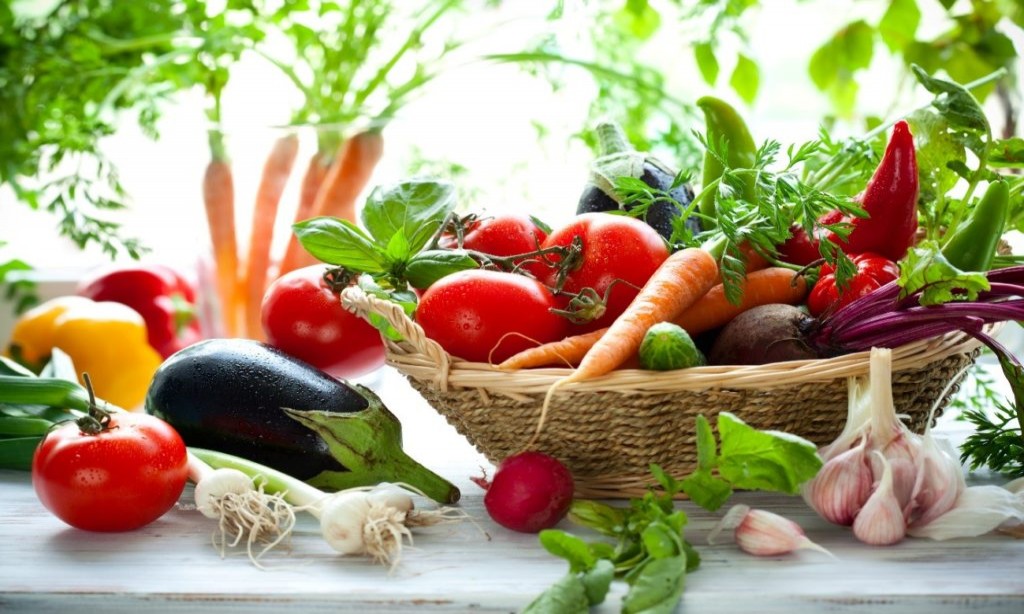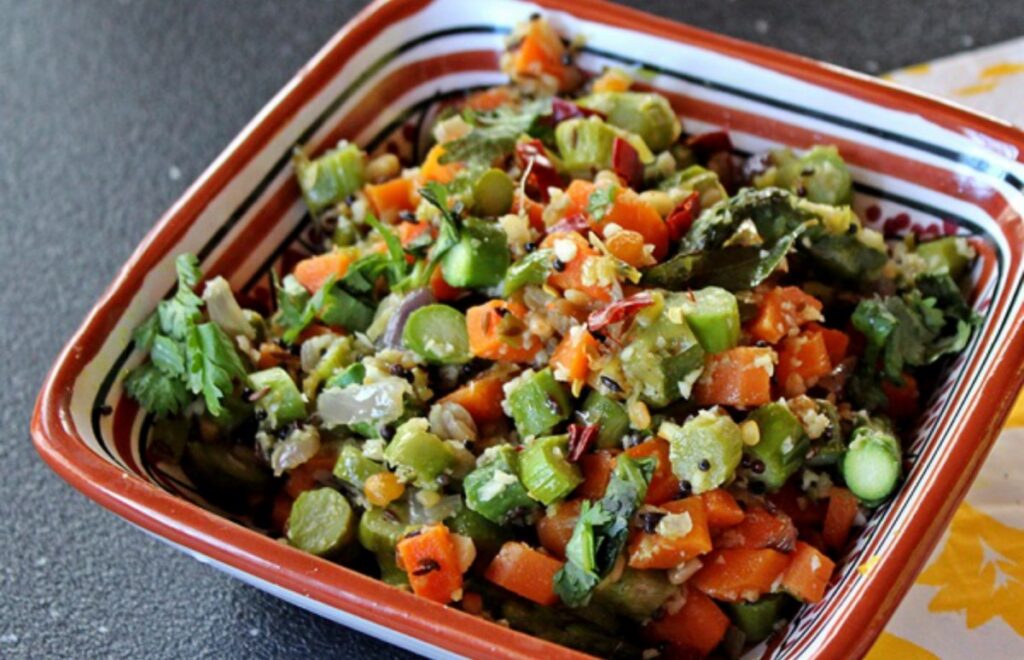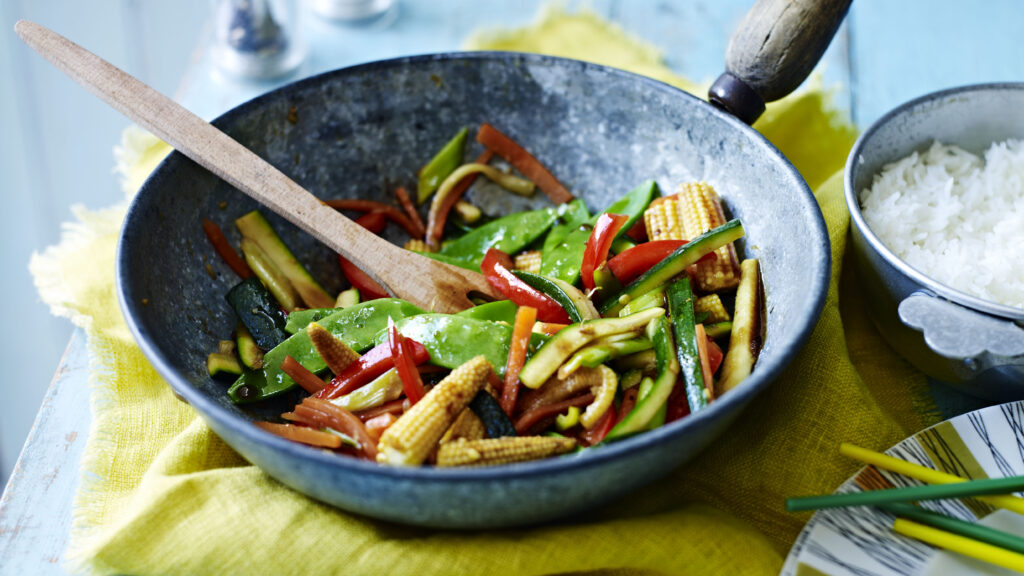Vegetables provide an abundance of flavors, textures, and nutrients that can improve any dish. The ability to master the art of cooking vegetables can completely change your eating experience, regardless of your level of culinary experience.
This article will explore 5 simple approaches to enhance your vegetable cooking skills. These ideas will elevate your cooking experience, whether you’re aiming for better health, impressing guests, or just savoring the wonderful tastes of fresh produce.
1. Choose fresh vegetables

Source: fswa-net.com
The choice of vegetables at this stage can make or break your culinary journey. It’s all about selecting the freshest, highest-quality produce available, which forms the basis of a truly memorable meal.
Look for vegetables that have a pleasing appearance and show signs of being fresh. Fresh food is frequently identified by its brilliant colors, such as the dark green of spinach, the vibrant orange of carrots, or the rich red of tomatoes. This represents a wealth of vital nutrients, including vitamins, minerals, and antioxidants, which can improve your food’s flavor and nutritional content.
Texture is also important. A vegetable should feel stiff and sturdy when lightly squeezed. Age or over-ripeness can be seen by mushy or soft textures, which might lower the overall quality of your meal. Crisp vegetables, like bell peppers and snap peas, can give salads or stir-fries a wonderful crunch when roasted, whereas a firm eggplant or zucchini can hold up well on the grill or in a sauté. Speaking of oven-roasted goodness, consider delicious oven roasted asparagus with its slightly crispy exterior and tender core. This is only possible when the asparagus is fresh and green.
Moreover, avoid blemished or wilted vegetables, as they indicate aging or mishandling. Fresher produce tastes better and retains more nutrients during cooking, preventing nutrient loss.
2. Properly prep the vegetables

Source: thepioneerwoman.com
Give your vegetables a thorough wash to start your preparation. Although it might seem simple, this step is crucial for removing dirt and pesticides from the skin. Washing your vegetables first is a good idea even if you want to peel them later. Depending on the type of vegetable, a light scrub with a vegetable brush or a rinse under cool running water should be sufficient.
After cleaning and preparing your vegetables, consider how you will cut them. The ultimate presentation of your food and the cooking procedure can be greatly influenced by the size and shape of your cuts. Smaller pieces cook more quickly and are perfect for stir-fries and sautés, which call for quick, even cooking. On the other hand, larger pieces are great for roasting or grilling and can provide a pleasing crunch.
You should also be consistent with your cuts. To ensure that each piece cooks equally, strive for uniformity. This improves the presentation of your food and ensures all the ingredients are cooked simultaneously, preventing some from being overcooked while others are underdone.
3. Use the right cooking method

Source: instacart.com
Choosing the right cooking method for each type of vegetable unlocks its full potential, as each type has unique textures and flavors. For example:
- Boiling: It is a go-to method for sturdy vegetables such as potatoes, carrots, and green beans. Boiling them until they are tender but not mushy maintains their natural crunch and flavor. Don’t forget to salt the water; this simple step enhances the vegetable’s taste.
- Roasting: Roasting is a technique that caramelizes the natural sugars of vegetables like bell peppers, asparagus, and broccoli, resulting in a crispy texture and a delightful flavor.
- Sautéing: It is a quick, gentle cooking method for delicate vegetables like leafy greens, onions, and mushrooms. This preserves their vibrant colors, crunch, and nutrients.
- Steaming: This is the gentle giant of cooking methods, well-suited for vegetables like cauliflower, Brussels sprouts, and spinach. It allows these greens to retain their vibrant colors and nutritional value while achieving the desired level of tenderness.
4. Don’t overcook

Source: onegreenplanet.org
The culinary sin of overcooking vegetables can result in a disappointing loss of flavor and vital nutrients. The first rule is to respect the clock, as different vegetables have varying cooking times. Overcooking can turn vibrant greens into a dull, lifeless shade and transform crisp textures into mush. Your best ally in the kitchen might be the timer. Set the timer to how long the vegetable should cook and keep an eye on the veggies.
One of the characteristics of perfectly cooked vegetables is that they should be tender but still have a tiny degree of bite, or “al dente.” This means they should give light pressure from a fork or toothpick but not crumble into a mushy heap. By striking this balance, the vegetable keeps its authentic flavors and textures.
Don’t hesitate to taste test as you go; it is the most accurate way to determine when your vegetables are done. As it cooks, check a slice to see if it has reached the desired level of softness at various intervals.
5. Season and flavor thoughtfully

Source: bbc.co.uk
Vegetables are great for culinary creativity; the right seasonings and flavors can transform them into delectable dishes. Here’s how you can elevate your vegetable dishes using seasonings and flavor combos:
- Herbs: Herbs like basil, thyme, rosemary, and cilantro can enhance the flavor of vegetables by infusing them with aroma and savory notes.
- Spices: Spices, like paprika and cumin, can transform vegetables into global cuisines with a pinch of your preferred blend or a dash of cayenne.
- Garlic: Garlic, when minced or roasted, enhances the flavor of vegetables and pairs well with many dishes, including roasted potatoes and sautéed spinach.
- Citrus zest: Grated lemon or orange zest enhances the flavor of dishes by adding a zingy, refreshing element to brighten up roasted or steamed vegetables.
- Balsamic vinegar: It enhances the natural sweetness of vegetables, especially roasted bell peppers or asparagus, by adding a sweet and tangy depth.
- Olive oil: This enhances kitchen flavor and richness, enhancing the taste of seasonings. Drizzle it over vegetables for a luscious finish.
Conclusion
Being a master of vegetable cooking involves more than just putting together a meal; it also involves utilizing the abundance of the natural world to produce dishes that are both enticing to the palate and healthy for the body. Each step, from the careful selection of fresh produce to the exact application of cooking techniques and the inventive use of seasonings, contributes to a symphony of flavor and nutrition. Whether you are a professional chef or a budding home cook, embrace the colorful world of vegetables and make tasty food for yourself and your loved ones.
